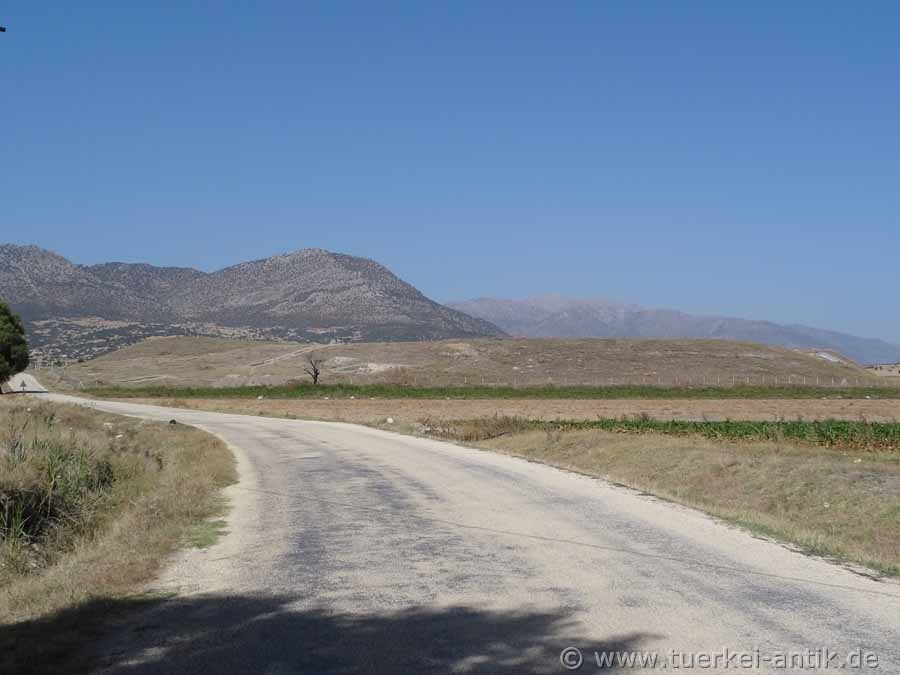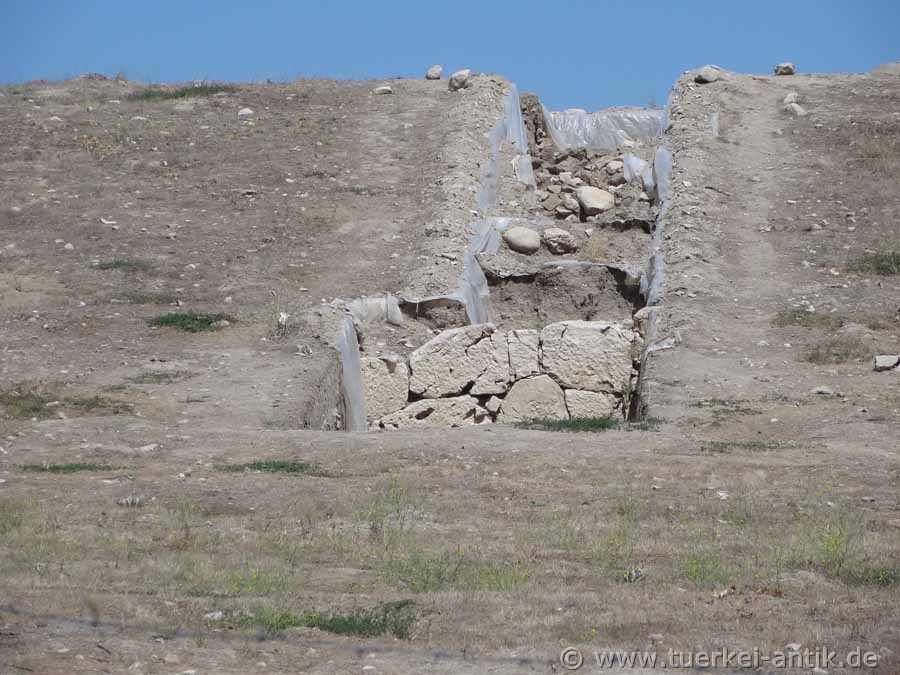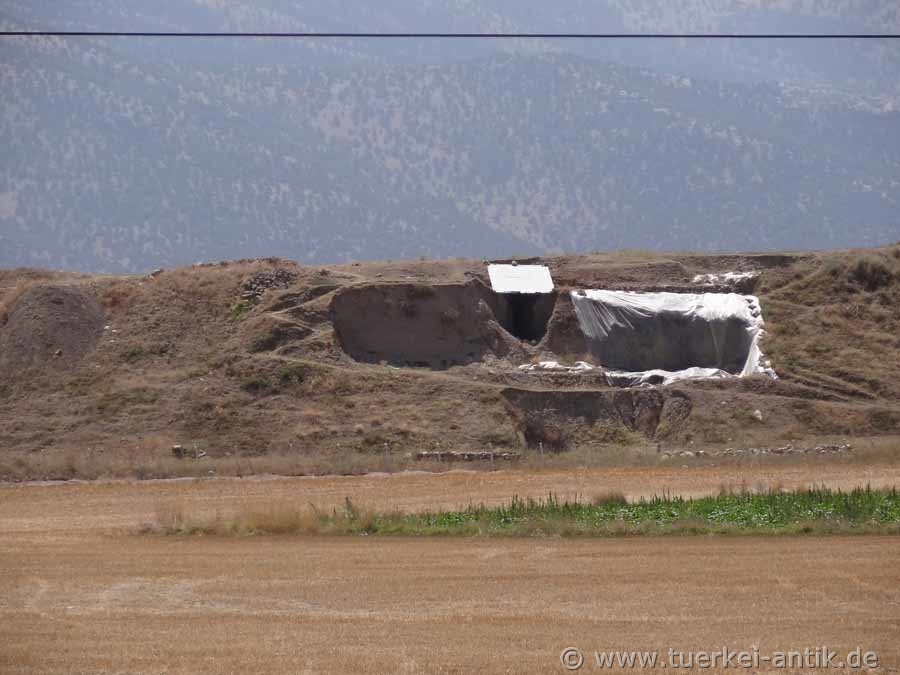 |
| Choma | |||
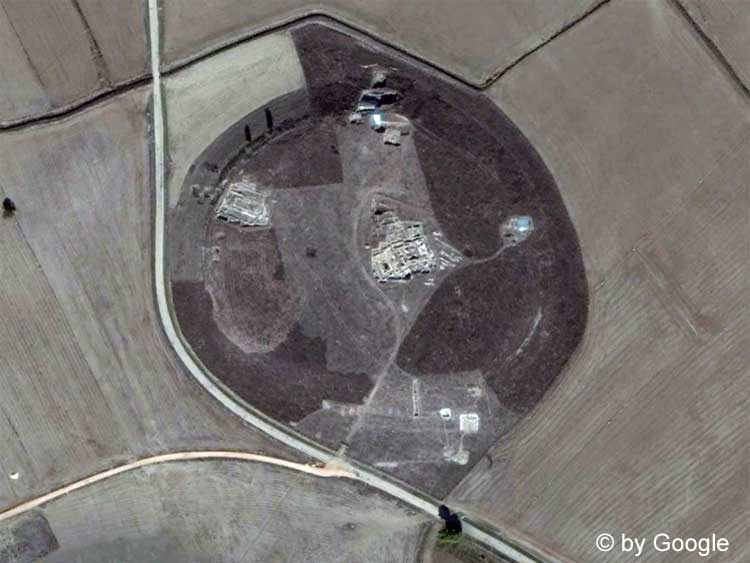 |
|
||
| The remaining town hill | |||
|
As little as remains of the ancient Lycian city of Choma, as little is known about it. The sparse remains of the town are located on a hill, 17 km south of Elmali in the plain of the same name near today's village Hacımusalar. The hill measuring 300 x 350 metres rises 13 metres above the level of the plain. Choma belonged to the Lycian Confederation. In the Roman Empire, when the city was part of the province of Lycia et Pamphylia, it is mentioned by Pliny and Ptolemy. There are coins from the 1st century BC and the time of Gordian III. In the 2nd century AD, the Euerget Opramoas of Rhodiapolis donated 7000 denars to the city for a Stoa and an imperial temple. |
|||
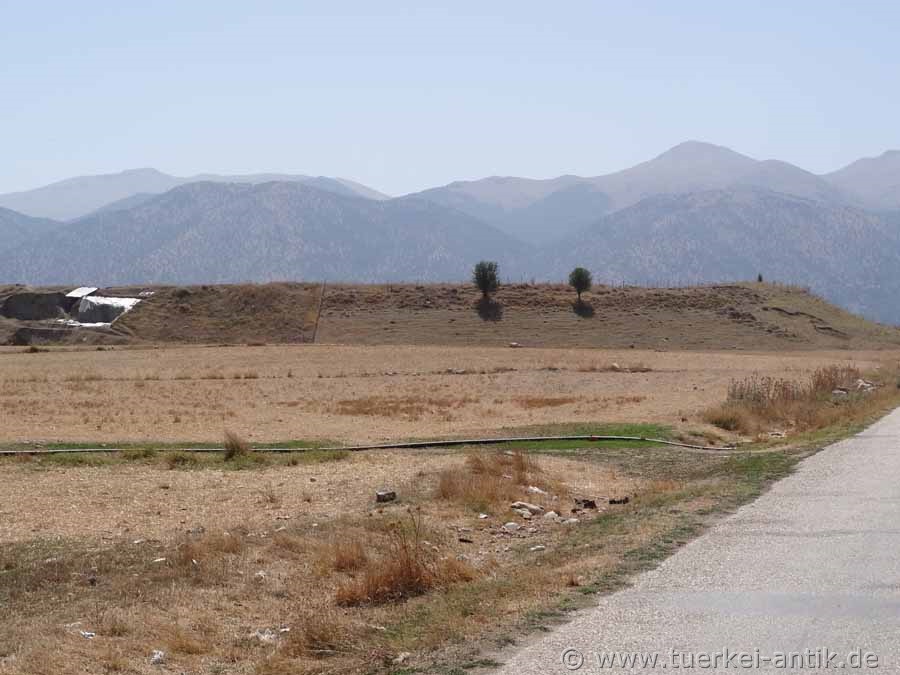 |
|||
| The town hill | |||
|
In 1993, archaeologist Ilknur Özgen from Bilkent University Ankara began systematic research on the hill. Inscriptions indicated that these were remains of the ancient Lycian city of Choma. |
|||
|
|
|||
| The hill in the plain | |||
|
The traditional prosperity of the settlement in antiquity was to a large extent due to its strategic location on a main traffic axis through the highlands to the Lycian coast. But also its rich surroundings, which offered well irrigated agricultural areas as well as excellent hunting and fishing grounds. Until recently, the city lay on the shore of a large lake that has been completely drained over the last 30 years. The surrounding mountains and the plain were covered with dense cedar forests. The river Aedesa, already mentioned by Pliny and in the meantime also silted up, fed the lake with water from the Taurus. |
|||
|
|
|||
| exploratory excavation | |||
|
During excavations in 2012 along the southern slope of the hill a massive retaining wall was discovered at its base, which delimits a presumably flat surface, which extends to the south in the direction of an alleged bathhouse. |
|||
|
|
|||
|
|
|||
|
The North Side in September 2015 |
|||
|
Excavations on the northern side of the hill have uncovered a building development which, beginning in the early Bronze Age, extends in several construction phases up to the early Iron Age. The preserved building remains prove a settlement up to the late Roman-Byzantine period and beyond. |
|||
|
The initial excavations in 1994 concentrated mainly on the top of the hill. First of all, evidence of late Roman and Byzantine activity was uncovered here, including two churches. The central church as well as the western church show three construction phases. Both churches are surrounded by numerous graves. |
|||
|
|
|||
|
To get to Choma from Finike take the national road D635 at Düdenköy about 5 km before Elmalı in the direction of Beyler / Hacımusalar. After 10 km, just before the village Hacımusalarder the hill is reached. |
|||
| Photos: @chim | |||
| Translation aid: www.DeepL.com/Translator | |||
| Source: Wikipedia and others | |||
|
|
|||

